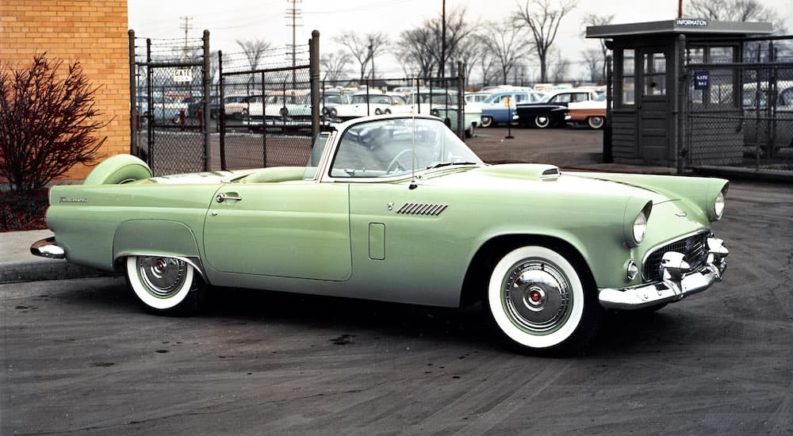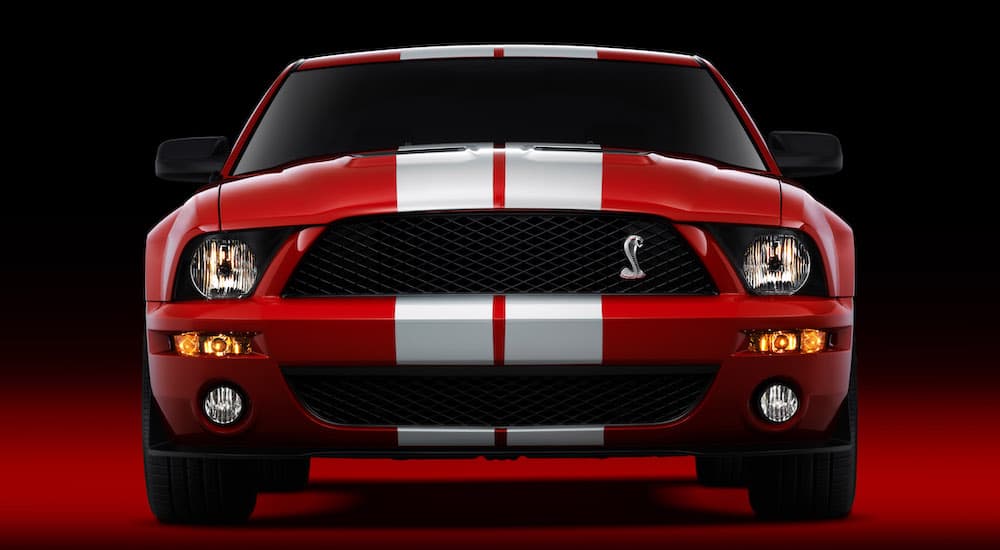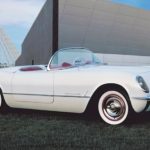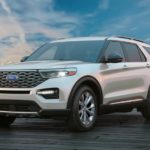Visit a Ford dealership, and here’s what you won’t see: cars. The sedan, the hatchback, and the coupe are all but gone from the venerable Ford lineup, replaced by more popular crossovers and SUVs. We get it, since SUVs outsell sedans by a large margin, but we can’t help but fantasize about a world where a few classic cars still could be found.
Names like Thunderbird and Taurus remind us of a time when cars were king. We demanded beefier engines under the hood, and extravagant luxury touches inside the cabin (does anyone remember the Thunderbird Elan?). Little did we know that luxury would soon be measured by the dimensions of an infotainment touchscreen.
No matter how much you love your boxy SUV, there’s nothing like the close-to-the-road feeling you get behind the wheel of a low-profile coupe. Snug in your bucket seat with one hand on the shifter and your left foot poised to dump the clutch, you expertly execute your launch and leave a wake of clunky SUVs in your dust. It’s a nice fantasy, anyway, but if we could wave our magic wands and bring back any three Ford vehicles, these are the ones we’d pick.
#1 – The Ford Thunderbird
The legendary Thunderbird (a.k.a. the T-Bird) underwent many total transformations over the years. It began its journey into our hearts back in 1955 when poodle skirts were high fashion, and a trip to the local drive-in diner was everyone’s favorite Friday night activity. Amid the French fries and milkshakes, drivers proudly showed off their two-door T-Bird convertibles.
The ’55 T-Bird was launched by Ford as a true personal luxury car with a focus on comfort. Initially, the automaker couldn’t settle on a name. Lucky for Ford – and all of us – the names Runabout and Beaver were considered and quickly rejected. Buyers had to pony up around $2,500 for a new Thunderbird, but sales were brisk despite its somewhat high price tag (for the day).
First produced as a two-door, two-seat convertible, the original Thunderbird received a powerful V8 engine and wore a set of whitewall tires. Enthusiasts look back on those early production years wistfully, especially because the Thunderbird’s proportions continued to grow over the next two decades as it followed a customer-driven trajectory of comfort and roominess. Gone were the spirited lines and sporty performance. Instead, by 1972 it grew into a massive two-door luxury coupe.
All told, the Thunderbird made it through eleven generations of redesigns until it was finally discontinued in 1997. The tenth generation (1989 – 1997) saw a modernized T-Bird designed to go head-to-head with a crop of newly dominant German luxury coupes. The plan failed miserably, which resulted in the T-Bird getting the axe. Ford brought it back for a brief five-year return in the early 2000s, but again buyers weren’t all that interested.
Here are our two cents: Ford should bring back a 1950’s-era Thunderbird and make it an EV. Classic lines, epic performance numbers, and a palate of uncommon exterior paint colors with retro names, like Torch Red and Goldenrod Yellow. We predict it would be a big hit.
#2 – The Ford Ranchero
Not as many folks are familiar with the short-lived Ford Ranchero. Unfortunately, its doppelgänger – the Chevy El Camino – received all the attention. Even today, the El Camino is a pop culture icon. The poor Ranchero actually had far more to offer buyers and beat the El Camino to the market, but a lack of solid marketing by Ford Motor Company rendered it an afterthought.
The Ranchero featured a two-door coupe body style with a pickup truck-like bed. It survived seven generations and was manufactured from 1957 to 1979. As it progressed through each generation, the Ranchero’s overall dimensions shrank, that is until the fourth generation, which only lasted two model years. It was them that the Ranchero grew in size again, and Ford began building a GT trim with a massive 428 cubic inch V8 engine.
By its seventh and final generation, the Rancho morphed into a more luxurious version of itself. The 1977 – 1979 production run featured Ranchero trims more in line with Ford’s upscale LTD II sedan. By the end of 1979, government restrictions on car-based pickup trucks put a damper on Ford’s ability to manufacture the Ranchero cost-effectively. It was eventually discontinued and replaced by compact pickup trucks like the Ranger.
Collectors covet classic Rancheros, but we think modern buyers’ appetites for a car/pickup truck hybrid are beginning to heat up. Consider Hyundai’s brand new 2022 Santa Cruz. Branded a “Sport Adventure Vehicle,” this strange mix of car, crossover, and pickup has caught the eye of journalists and buyers who are a little tired of the SUV body style. Is it a predictor of changing tastes?
Here are our two cents: Ford should reintroduce the Ranchero as a performance utility vehicle. Overall length should be sufficient to kick it into the mid-size category, and a robust all-wheel drive system, automatic air suspension for higher ground clearance during off-road driving, and serious damping for a smooth on-the-road experience should lead the list of performance attributes.
#3 – The (Real) Shelby Cobra
You’d be hard-pressed to find a car nut who doesn’t know Carroll Shelby’s story. The ex-flight instructor and retired racing car driver turned the British AC Ace roadster into one of the most iconic American sports cars. He tossed the Bristol inline-six in favor of a meaty, throaty V8 – supplied by Ford – and the Shelby Cobra was born. It stands today as one of the most innovative sports cars ever built.
The Shelby Cobra competed at Le Mans, Sebring, and countless other races, large and small. Over the years, Carroll Shelby figured out how to incorporate ever-larger engines and adapt the suspension to achieve optimal handling. With help from other automotive experts, Shelby mastered aerodynamics and effectively competed with elite brands like Ferrari in top-end speed capability.
Performance numbers for various Shelby Cobra models rival those of today’s most exciting performance-oriented vehicles. Numbers like 485 horsepower and 480 lb-ft of torque weren’t uncommon, nor was a top-end speed of 185 miles per hour and a 4-second zero-to-sixty time. And yes, eventually, the Cobra outperformed Ferrari.
A handful of the Shelby Cobra cars produced for racing ended up on the market for purchase as street-legal vehicles. Because of the extremely limited production numbers, vintage (and authentic) Cobras are highly coveted by collectors. It’s not unusual for an original Shelby Cobra to fetch millions on the auction circuit.
Here’s our two cents: Building off the success of the Mustang Mach-E, Ford should produce a limited number of Special Edition Shelby Cobra Mach-E models. As a performance package add-on to the Mach-E GT, the Special Edition should push performance specs to the max, mirroring those found on the 2022 Ferrari 296 GTB. How does 800+ horsepower sound to you?
When Old is New Again
Lucky Ford! After all, the company owns some of the most coveted and celebrated nameplates on the planet. Who doesn’t love the iconic Thunderbird? While Ford’s attempts to resurrect the T-Bird fell short in the past, America’s obsession with cars hasn’t changed. The impetus of EVs puts Ford in a great position to reintroduce the Thunderbird with battery power. The combination of old and new might trigger serious customer interest.
Whether you recall these vintage vehicles with affection or derision, the fact is we love owning a piece of history. We’re also accepting of modern changes, such as Ford’s decision to electrify the popular F-150. The sky’s the limit for America’s automotive desires. Companies like Ford need to take risks and introduce a new generation to the classics.






